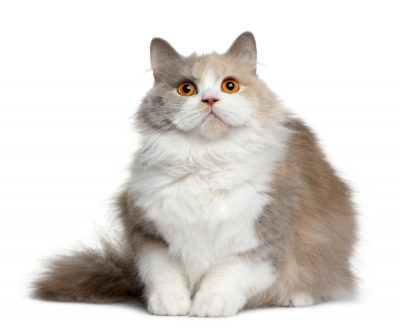Hormonal Problems in Pets
Cats and Dogs, like humans, have a range of hormones that help regulate their mood, appetite, energy, and a variety of other functions relevant to everyday life. Sometimes your furry friend may not be acting like themselves.
They may seem overly thirsty or may urinate more frequently. They may even experience recurring vomiting or diarrhea. Sometimes, they may have periods of weakness and even depression. These symptoms are commonly associated with a hormone imbalance; however, the experienced staff at AMC will take the proper steps to ensure your pet is back to full health in no time.
Adrenal Gland Disorders
A disorder known as Addison’s Disease is often the culprit responsible for your pet’s change in mood or behavior. Addison’s Disease is a disorder of the adrenal glands in which adrenal hormone production is insufficient. The condition may result from damage to the glands by infection, cancer, or drugs, or the cause may be unknown. Pituitary gland disease may also cause adrenal insufficiency.
Insufficient adrenal hormones can upset the body’s conservation of sodium (salt), reduce circulating blood volume, impair heart and kidney function, damage the heart muscle, and cause faulty sugar and fat metabolism. Decreased tolerance of stress is the primary characteristic of Addison’s Disease, and affected pets are often presented in a shock-like state of collapse called an Addisonian crisis. Extensive blood and adrenal function tests are necessary to properly diagnose and plan treatment for Addison’s Disease.
Another potential culprit found in dogs is Cushing’s Disease. Cushing’s Disease is characterized by the overproduction of certain hormones by the adrenal glands. It is also known as hyperadrenocorticism and can be caused by tumors in the adrenal glands or the pituitary glands. Only a qualified veterinarian can diagnose and develop suitable treatment options for Cushing’s Disease.
Diabetes
In Dogs
 Diabetes in dogs is very similar to diabetes in humans. The glucose in your dog’s system cannot be normalized and requires insulin to be regulated properly. If this does not occur, the dog will experience a severe lack of energy and, if left untreated long enough, the condition may be fatal. Depending on the severity of the condition, a variety of treatments may be necessary. However, the most important treatment is consistency. Consistent feeding times, meal portions, and medication administration will help keep your dog stable and stress-free. As always, your veterinarian is the best source of information regarding canine diabetes. If you notice a significant change in your dog’s behavior, appetite, or energy levels, please schedule an appointment with your veterinarian immediately.
Diabetes in dogs is very similar to diabetes in humans. The glucose in your dog’s system cannot be normalized and requires insulin to be regulated properly. If this does not occur, the dog will experience a severe lack of energy and, if left untreated long enough, the condition may be fatal. Depending on the severity of the condition, a variety of treatments may be necessary. However, the most important treatment is consistency. Consistent feeding times, meal portions, and medication administration will help keep your dog stable and stress-free. As always, your veterinarian is the best source of information regarding canine diabetes. If you notice a significant change in your dog’s behavior, appetite, or energy levels, please schedule an appointment with your veterinarian immediately.
In Cats
The symptoms, diagnosis, and treatment of diabetes in cats are very similar to their canine counterparts. If you are concerned that your cat may have diabetes, please see your veterinarian immediately. The AMC staff is dedicated to helping your diabetic kitty live the most comfortable, normal life possible.
Hypothyroidism in Dogs
The thyroid gland is responsible for regulating the rate of metabolism, and when it is functioning at a rate less than normal, it is known as hypothyroidism. Hypothyroidism is typically caused by one of two diseases: lymphocytic thyroiditis or idiopathic thyroid gland atrophy. Rarely, it may be caused by thyroid cancer.
Hypothyroidism affects nearly every organ in the body. The resulting symptoms include weight gain without an increase in appetite, lethargy, excessive shedding, high blood cholesterol, cold intolerance, and an increased susceptibility to skin and ear infections.
Your veterinarian will likely administer a T4 test to measure the levels of the main thyroid hormone to determine whether your dog may be experiencing hypothyroidism. Additional testing may be necessary. While this disorder is treatable, it is not curable. A replacement thyroid hormone must be administered for the remainder of the dog’s life. However, if treated properly, there is no reason your dog can’t live a normal, happy life.
Hyperthyroidism in Cats
 Contrary to hypothyroidism, hyperthyroidism is characterized by an overactive thyroid gland, resulting in an increased metabolic rate. This disorder is common in older cats. The heart is the organ most affected by this disease, as it is overstimulated, causing blood to be pumped faster and more forcefully, resulting in increased blood pressure. An increased metabolic rate and a decrease in your cat’s weight (even with an increased appetite) are common signs of hyperthyroidism. Excessive water intake and urination are also indicators.
Contrary to hypothyroidism, hyperthyroidism is characterized by an overactive thyroid gland, resulting in an increased metabolic rate. This disorder is common in older cats. The heart is the organ most affected by this disease, as it is overstimulated, causing blood to be pumped faster and more forcefully, resulting in increased blood pressure. An increased metabolic rate and a decrease in your cat’s weight (even with an increased appetite) are common signs of hyperthyroidism. Excessive water intake and urination are also indicators.
Your veterinarian will take special care in diagnosing your cat. There are a variety of ways to treat this disease, including radioiodine therapy (offered at our Melbourne location), medication, surgery, or prescription diets. Your veterinarian will discuss the pros and cons of each treatment and help you make the best choice for your cat. While there are no known preventative measures, regular visits to the vet, especially as your cat ages, will help keep your pet in the best shape possible.



